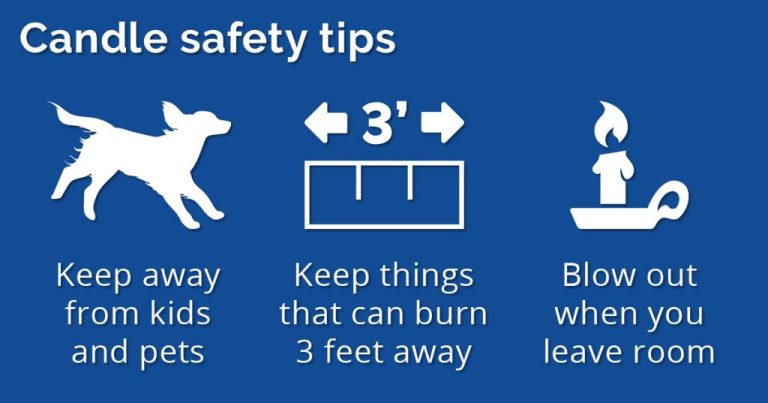Are Gel Candles Safe To Burn?
What Are Gel Candles?
Gel candles are made from a combination of mineral oil and a polymer resin. This gives the wax a gel-like consistency that is thicker than regular candle wax (Archipelago, 2022). Unlike paraffin wax or soy wax, gel candle wax contains no actual wax. The mineral oil allows the gel wax to be transparent and glossy like gel.
The polymer resin is added to help the gel wax hold its shape and retain a smooth surface when cool. It also raises the melting point of the gel wax to be similar to standard candle waxes (Rustics Essentuals, 2020). This allows gel candles to burn slowly and cleanly like regular candles.
When burned, gel candles give off more luminosity than regular candles due to the clarity of the gel wax. The transparency of gel allows light to pass through more fully. Gel candles also allow for more creativity in shapes, designs, and effects in the candle itself. The thick gel holds embeds and impressions very well (Rustics Essentuals, 2020).
Are Gel Candles Safe?
Overall, gel candles are considered safe to burn when used properly. However, there are some safety concerns to be aware of. Gel candles are made from a polymer resin and mineral oil base as opposed to paraffin wax. This gel wax has a lower melting point which creates the visual effect of a burning liquid. While beautiful, the lower melting point means the wax can get hot enough to ignite at a lower temperature (Rustice’s Essentuals).
Proper wick size for the jar container is crucial to prevent overheating and too large of a flame. Testing the candle before selling or gifting helps identify any issues. Using the wrong fragrance or dye oils not approved for gel wax can also create problems. With careful production and proper safety precautions, gel candles can be safe to burn, but steps should be taken to prevent fire or high temperatures (Citizens Sustainable). Always monitor the candle when burning and follow the manufacturer instructions.
Fire Safety
One of the biggest concerns with burning gel candles is the potential fire hazard if not used properly. Gel candles tend to have larger flames compared to standard wax candles. This is because gel fuels typically have a lower melting point and viscosity than wax, allowing more oxygen to mix with the fuel vapors. As a result, gel candle flames can reach 4-8 inches in height compared to 1-3 inches for a regular candle.
In addition to taller flames, gel candles can burn at higher temperatures. While paraffin wax candles may reach temps of around 1,400°F, some gel fuels can burn as hot as 1,800-2,000°F. These higher temperatures increase the risk of igniting nearby combustible materials if the flame comes into contact with them.

It’s important to keep gel candles away from things like curtains, paper, furniture, decorations, etc. The fuel can also spill while liquified and create a fire hazard on surfaces. Proper precautions are required to burn them safely. Using a candle burner or bowl can help contain the melted fuel. It’s also best to keep them away from high traffic areas where they risk getting knocked over accidentally.
Wax Melting
Gel candles have a higher melting point than traditional wax candles, usually around 275 degrees Fahrenheit (Source 1). While the wax itself takes longer to melt, once lit the exterior of the candle can still get hot enough to cause burns if touched. So it’s important to place gel candles somewhere stable and out of reach of children and pets to prevent accidental contact and burns (Source 2). The higher melting point does make gel candles less prone to issues like wax pooling, tunneling, and residue buildup compared to standard wax. But supervision is still required due to the exterior heat generated and potential fire hazards if placed near flammable materials.
Fragrances and Dyes
The additives used for fragrance and dye in gel candles can raise some safety concerns. Gel candles contain a much higher concentration of fragrance oil than standard candles to achieve their strong scents. While fragrances make candles smell nice, high levels of fragrance oil can irritate lungs and airways for some people. Certain synthetic fragrance chemicals are also linked to allergies, headaches, and other health issues.
Dyes are added for color, but some research indicates dyes like Red 40 may have carcinogenic effects. There are also concerns around inhaling the nanoparticles of dye used in gel candles. As with fragrances, it’s the concentration level that primarily drives the risk. Gel candles use a lot more dye to get vivid colors compared to other candles.
Overall, fragrances and dyes in moderation are likely not a big concern. But the high levels present in some gel candles may be worth considering, especially for people sensitive to synthetics, dyes, and strong scents. Those looking to minimize risks may want to choose gel candles with subtler scents and colors. As always, it’s advisable to burn candles in a well-ventilated area.
Source: https://www.generalwax.com/candle-safety/
Wick Issues
One safety concern with gel candles is potential issues with the wick. If the wick is too small for the candle, it won’t burn properly and can create excess soot (Source). Sooting occurs when the wick doesn’t get hot enough to fully combust the fuel, causing incomplete burning and black smoke. With gel candles, smaller jar sizes often require smaller wick sizes to prevent this issue.
However, if the wick is too large, it can create overly high flames and get too hot. Proper wick sizing relative to the candle diameter and fuel load is important. The wick must be able to burn hot enough to liquefy the gel wax but not so hot as to create large, unsafe flames. Testing wick sizes beforehand and following manufacturer recommendations can help avoid wick-related safety problems.
Where to Safely Burn Gel Candles
When choosing where to burn gel candles, it’s important to place them on a flat, stable, heat-resistant surface away from anything flammable. Always avoid placing gel candles near curtains, furniture, bedding, carpets, books, paper, or anything else that could catch fire (Gel Candle Safety, Candle Safety). Don’t put gel candles on wood surfaces, plastic surfaces, near drop cloths or fabrics. The safest spots are on surfaces made of stone, brick, concrete, slate, glass or metal. Keep them at least 12 inches from walls and other items. Avoid cabinets or tight spaces with little ventilation. Never burn gel candles in an area where they could get knocked over by kids, pets or activity. Select a stable spot where the candle won’t wobble or tip over while burning (All About Gel Candles). Only burn gel candles on a flat, hard, fireproof surface in a well-ventilated area.
Supervision When Burning
Fires can occur quickly if gel candles are left burning unattended, so proper supervision is crucial. Never leave a burning gel candle unattended, even for a few minutes. Always stay in the same room to monitor the candle while it is lit.
Check on the candle frequently to make sure the flame size isn’t getting too high or causing issues. Watch for signs of the candle getting too hot, such as wax pooling out beyond the rim of the container. Listen for any crackling noises that could indicate a wick problem.
Extinguish the candle before leaving the room or going to sleep. Do not burn a gel candle all night or leave it lit if you’re not around. With adequate monitoring while burning, you can enjoy gel candles safely without risk of fire from neglect.
Alternatives
While gel candles can be concerning in terms of safety, there are many safer candle alternatives to consider. Beeswax and soy candles are often recommended as safer options. Beeswax is a natural wax that burns cleanly and slowly, without producing a lot of soot. Soy wax candles are also made from a natural, renewable resource and have a lower melting point, reducing the risk of burns. Other gel candle alternatives include flameless candles, which use LED lights to mimic the look of a real candle without an open flame. Flameless candles come in many styles, like traditional looking pillars, floating candles, or decorative novelty shapes. For those who want an atmospheric candle-like glow without any worry of fire risk, flameless candles are an excellent gel candle alternative. Finally, battery-operated candles also provide flickering ambiance without an open flame. With safer waxes, flameless, or battery-operated options, it’s possible to enjoy candlelight atmospheres with much lower safety risks.
Source: https://www.thereviewhut.co.uk/sainsburys-home-christmas-spice-gel-candle-review/
Safety Tips
When using gel candles, it’s important to follow some basic safety guidelines to prevent fires or other hazards:
- Always keep gel candles on a heat-safe surface. Glass, metal, or stone work best – avoid placing them on wood furniture or flammable materials (https://candlepursuits.com/do-gel-candles-melt/).
- Never leave a burning gel candle unattended. Extinguish the flame if you have to leave the room.
- Keep gel candles away from drafty areas and vents to prevent the flame from flaring up.
- Trim wicks to 1⁄4 inch before lighting to prevent high flames.
- Allow the wax pool to fully melt before extinguishing the flame.
- Allow melted gel wax to solidify before moving the candle.
- Keep candles out of reach of children and pets.
- Never burn a gel candle for more than 4 hours at a time.
Following basic precautions like these will help ensure gel candles are used safely.


